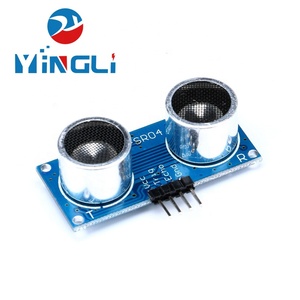Introduction to Chirp Sonar Transducer
The chirp sonar transducer represents a groundbreaking advancement in maritime navigation and fish finding technologies. This sophisticated device utilizes Continuous High Frequency methods to emit sonar signals that provide detailed underwater imagery. Unlike traditional sonar, which transmits a single frequency, chirp technology sweeps through a range of frequencies, delivering clearer and more accurate representations of the underwater environment. This innovation is particularly valuable for anglers, marine researchers, and commercial fishery operators who require precise data for effective fishing and exploration.
Types of Chirp Sonar Transducers
There are different types of chirp sonar transducers, each designed to cater to specific applications and environments:
- Mid-Frequency Transducers: These units operate in a range of 80-200 kHz, making them ideal for shallow water fishing and detailed bottom structure mapping.
- High-Frequency Transducers: Ranging from 200-400 kHz, these transducers excel in scanning smaller areas with pinpoint accuracy, perfect for ultra-clear imaging of fish and habitat structures.
- Low-Frequency Transducers: Operating at 40-80 kHz, these transducers are suited for deep-water applications, where signals can penetrate greater depths, making them effective for ocean exploration.
- Dual-Frequency Transducers: Combining both high and low frequency capabilities, these versatile transducers provide flexibility for varied fishing conditions and depths.
Applications of Chirp Sonar Transducers
The versatility of chirp sonar transducers allows them to be utilized across a variety of sectors:
- Sport Fishing: Anglers use these devices to locate schools of fish with precision, utilizing clear images of fish and underwater structures that inform bait selection and fishing strategies.
- Aquaculture: Professionals in fish farms employ chirp sonar for effective monitoring of fish populations, feeding patterns, and habitat conditions to optimize growth and production.
- Marine Research: Sea researchers benefit from detailed data collection for species tracking, habitat mapping, and ecological studies, contributing greatly to marine conservation efforts.
- Navigational Aid: These transducers enhance the nautical navigation experience by providing real-time depth measurements and providing information on underwater terrain.
Features and Advantages of Chirp Sonar Transducers
When considering a chirp sonar transducer, it’s important to recognize the key features and advantages that set it apart:
- Enhanced Resolution: The chirp technology ensures a clearer imaging quality, allowing users to see individual fish and underwater structures clearly.
- Wide Frequency Range: The ability to sweep through a variety of frequencies allows these transducers to adapt to different water conditions and depths, enhancing usability.
- Real-Time Data Processing: Advanced processors in chirp sonar transducers deliver immediate feedback on aquatic environments, improving decision-making for fishing and exploration.
- Durable and Marine-Grade Construction: Built to withstand harsh marine conditions, these transducers are resistant to corrosion and provide long-lasting performance.
In summary, the chirp sonar transducer is an indispensable tool for anyone involved in marine activities. With its ability to provide high-resolution images and data through innovative technology, this versatile device improves efficiency, accuracy, and overall success whether you are fishing, studying marine life, or navigating through unfamiliar waters.







































